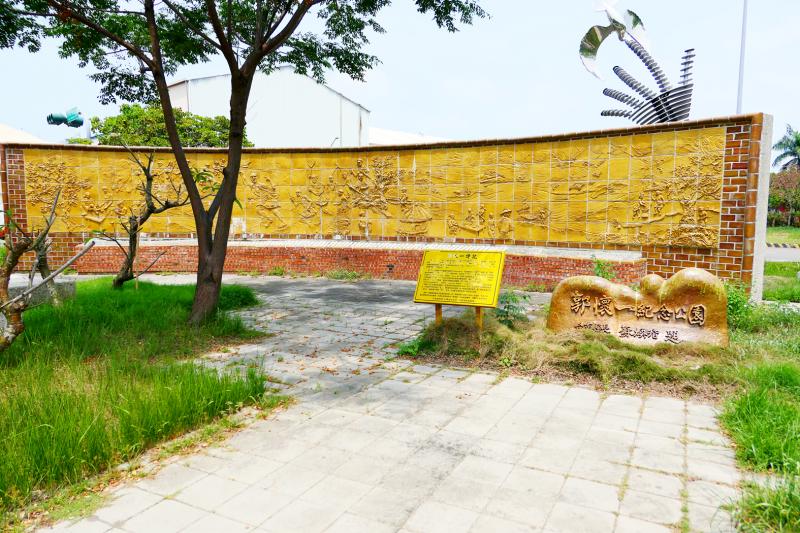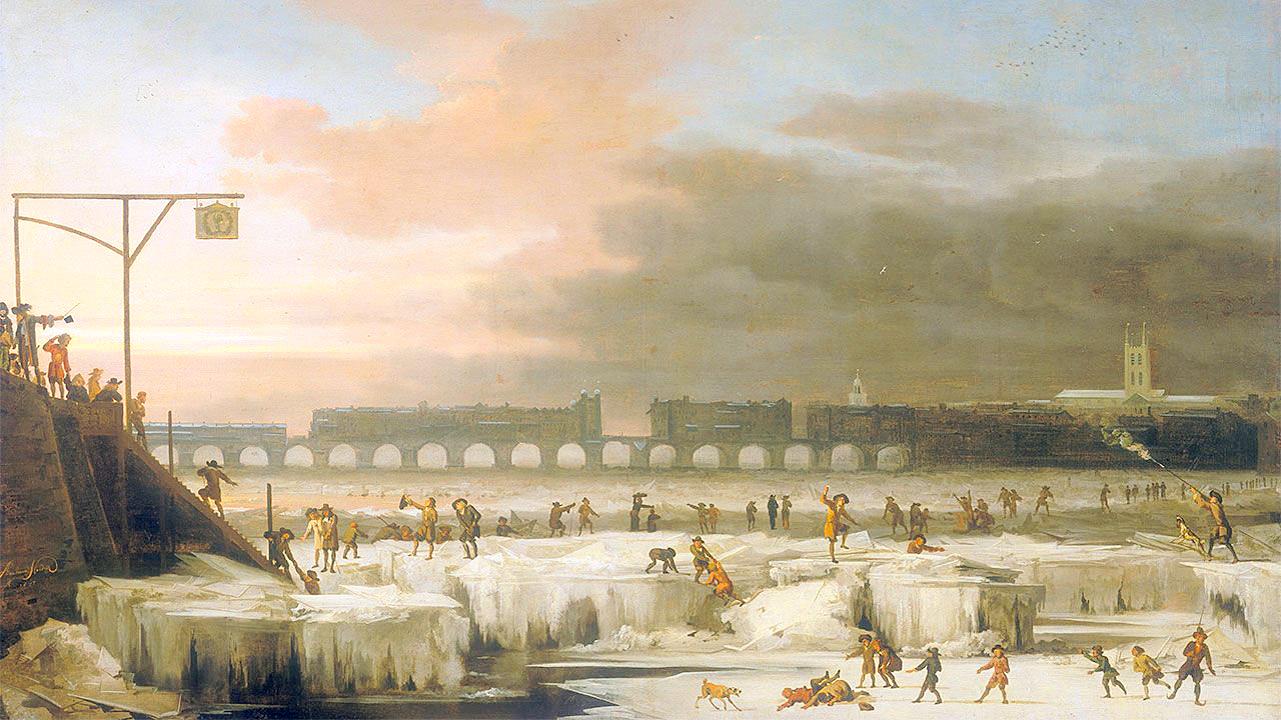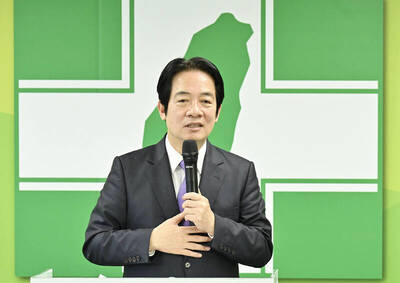In the 17th century, something like a third of the world’s population died.
Geoffrey Parker, in his monumental book on that terrible century, Global Crisis: War, Climate Change & Catastrophe in the 17th Century, itemizes the climate disasters that overwhelmed Europe, Asia, India and the Americas. Japan suffered in 1616 its coldest spring ever, it snowed in Fujian in 1618, and successive waves of drought and flood in India and Europe in the 1620-30s savaged harvests in many countries.
One of the “years without a summer,” 1628, followed 1627, the wettest summer in Europe in 500 years. The 1640s were a time of terrible floods, droughts, and cold around the world, as reflected in global tree ring data. In Scandinavia, 1641 was the coldest year ever recorded.

Photo courtesy of Wikimedia Commons
The second half of the century continued the cruelties of the first. All over the northern hemisphere, 1675 was remembered as another “year without a summer.” In 1683-84, the Thames froze over for weeks, and bull baiting exhibitions were held on the ice. Between 1650 and 1680, the Russian population plunged as harvests repeatedly failed in the face of the coldest autumn-to-spring stretches of the last 500 years and unremitting plagues and warfare.
From China to Catalonia, famine and plague ruled. Populations of towns and cities plunged, tax rolls evaporated, wars, revolutions and revolts broke out, the land and sea were the haunt of bandits and pirates, and cannibalism, infanticide and suicide stalked the poor. Town registers across Europe tell the same story of young males lost to war and populations decimated by plague and plundering.
At least our science, the lineal descendent of Enlightenment inquiry, which, Parker argues, was called into being in part by the succession of crises, does not blame witches (900 accused were slaughtered in south Germany alone after one bout of bitter weather in 1626) or comets.

Photo courtesy of Wikimedia Commons
Numerous lines of evidence show that after 1645 the sun’s output fell, a period known as the Maunder Minimum. The period between 1638 and 1644 saw 12 enormous volcanic explosions around the Pacific, filling the earth’s atmosphere with dust and cooling the planet. Plagues and wars did the remaining damage.
And then there were the taxes.
DEBT-DRIVEN UNREST

Photo courtesy of Wikimedia Commons
Koo Hui-wen (古慧雯) in “Weather, Harvests, and Taxes: A Chinese Revolt in Colonial Taiwan” described how a global phenomenon appearing locally generated the famous revolt of Kuo Huai-yi (郭懷一). All around the world, the succession of failed harvests led those in debt to rise up in the face of taxes (especially new ones to fund the constant warfare) and debts that could not be paid, feeding the toll of death and destabilization.
In the Taiwan case, according to Koo, local Han farmer Kuo had received loans in the form of pepper from the Dutch to finance sugar planting, but 1651 was dry in Taiwan, and the sugar harvest was poor. The loans could not be repaid. Longstanding issues with tax collection and debt were used to rally other farmers, and in 1652 the Han staged their most important revolt of the Dutch era.
The climate crisis also drove the unrest in less direct ways. A series of poor harvests with the attendant food trouble in the 1630s in northeast Asia led Manchu leaders to conclude that they had to “invade China or perish,” as Parker put it. Tree ring data shows that for 1643-44 were the coldest years in East Asia between 800 and 1800, with temperatures falling over 2°C on average throughout the midcentury period. In 1640, north China experienced its worst drought in 500 years.
The Manchu invasion in 1644, in part a product of the climate crisis, heightened the ongoing Ming dissolution. In Taiwan, this disorder and destruction was experienced as a loss of markets: in 1650 the price of venison shipped across the Taiwan Strait collapsed. The Dutch had sold monopolies on the trade in deer products, but even after the colonial authorities lowered the payments, many Han monopoly holders found themselves facing jail for unpaid debts, Koo describes. Revolt must have looked like an inviting alternative.
A poll tax begun in 1639 added to the already unpayable tax burden. Dutch soldiers began preying on civilians, extorting payments in cash or in kind, beating them and entering homes to rob them. This generated bitter resentment.
The Dutch East India Company (VOC) crushed Kuo’s revolt. They fielded veterans against the Han farmers: some 60 percent of their soldiers and sailors were actually German in origin, many the detritus of a floating population set adrift by the savage Thirty Years War from 1618 to 1648.
TWO DEGREES?
In Taiwan we focus on the Dutch Era as part of Taiwan history — part of the way we often fail to background Taiwan history against the global events that drive it — but for the Spanish and Dutch, Taiwan was part of an overall strategy for monopolizing the trade along the China coast and the whole corridor from the Moluccas (now the Maluku Islands in Indonesia) to Japan as Jose Eugenio Borao has described in “‘Intelligence-gathering’ episodes in the ‘Manila-Macao-Taiwan Triangle’ during the Dutch Wars.”
In 1618, the Dominican emissary Bartolome Martinez, after a trip to Macau to purchase ammunition and warn the Chinese not to send ships to Manila that fall, in 1619 suggested the Spanish put in a fort in Pacan (likely Beigang in what is now Tainan) to help with the regular Dutch blockades of Manila and protect the trade with China.
This would have made Taiwan an appendage of Manila and its markets, and perhaps the Spanish and not the Dutch would have colonized Taiwan. Perhaps today Taiwan would be regarded as one more island of the Spanish Philippines. Instead, in 1623 the Chinese proposed to the Dutch they relocate to Taiwan, and the rest was history.
In Europe, the terrible century ground on. In 1640, the Spanish and the Dutch went to war again, and this time the Dutch evicted the Portuguese from Malacca and took the Spanish fort in Keelung (with guns taken from Malacca) the following year.
In 1641, Portugal became independent, Phelim O’Neill and Rory O’Moore, deeply in debt, led the Irish in revolt after a bad harvest, the Nile fell to the lowest level ever recorded, and 12 years of drought began in the Canadian Rockies. Spain itself commenced a decade wracked by revolts, skyrocketing food prices, endless social disorder and equally endless war.
All these agonies were caused by a tiny drop in solar radiation combined with volcanism that varied temperatures just 1 to 2°C for the century.
Isn’t there a famous goal that calls for limiting temperature change to 2°C?
Notes from Central Taiwan is a column written by long-term resident Michael Turton, who provides incisive commentary informed by three decades of living in and writing about his adoptive country. The views expressed here are his own.

May 11 to May 18 The original Taichung Railway Station was long thought to have been completely razed. Opening on May 15, 1905, the one-story wooden structure soon outgrew its purpose and was replaced in 1917 by a grandiose, Western-style station. During construction on the third-generation station in 2017, workers discovered the service pit for the original station’s locomotive depot. A year later, a small wooden building on site was determined by historians to be the first stationmaster’s office, built around 1908. With these findings, the Taichung Railway Station Cultural Park now boasts that it has

The latest Formosa poll released at the end of last month shows confidence in President William Lai (賴清德) plunged 8.1 percent, while satisfaction with the Lai administration fared worse with a drop of 8.5 percent. Those lacking confidence in Lai jumped by 6 percent and dissatisfaction in his administration spiked up 6.7 percent. Confidence in Lai is still strong at 48.6 percent, compared to 43 percent lacking confidence — but this is his worst result overall since he took office. For the first time, dissatisfaction with his administration surpassed satisfaction, 47.3 to 47.1 percent. Though statistically a tie, for most

In February of this year the Taipei Times reported on the visit of Lienchiang County Commissioner Wang Chung-ming (王忠銘) of the Chinese Nationalist Party (KMT) and a delegation to a lantern festival in Fuzhou’s Mawei District in Fujian Province. “Today, Mawei and Matsu jointly marked the lantern festival,” Wang was quoted as saying, adding that both sides “being of one people,” is a cause for joy. Wang was passing around a common claim of officials of the People’s Republic of China (PRC) and the PRC’s allies and supporters in Taiwan — KMT and the Taiwan People’s Party — and elsewhere: Taiwan and

Six weeks before I embarked on a research mission in Kyoto, I was sitting alone at a bar counter in Melbourne. Next to me, a woman was bragging loudly to a friend: She, too, was heading to Kyoto, I quickly discerned. Except her trip was in four months. And she’d just pulled an all-nighter booking restaurant reservations. As I snooped on the conversation, I broke out in a sweat, panicking because I’d yet to secure a single table. Then I remembered: Eating well in Japan is absolutely not something to lose sleep over. It’s true that the best-known institutions book up faster